NCERT Solutions for Class 10 Geography Chapter 3 – Water Resources
NCERT Solutions for Class 10 Geography Chapter 3 – Water Resources are essential for understanding water availability and conservation in the CBSE curriculum. These well-structured answers help students grasp topics like water scarcity, multipurpose river projects, rainwater harvesting, and sustainable usage. Designed as per the latest syllabus, these solutions strengthen conceptual clarity and improve exam preparation. Ideal for revision and practice, they promote responsible water management and awareness, making them a valuable study tool for scoring well in Class 10 Social Science exams.
NCERT Solutions For Class 10 Geography – Water Resources – Exercise Images
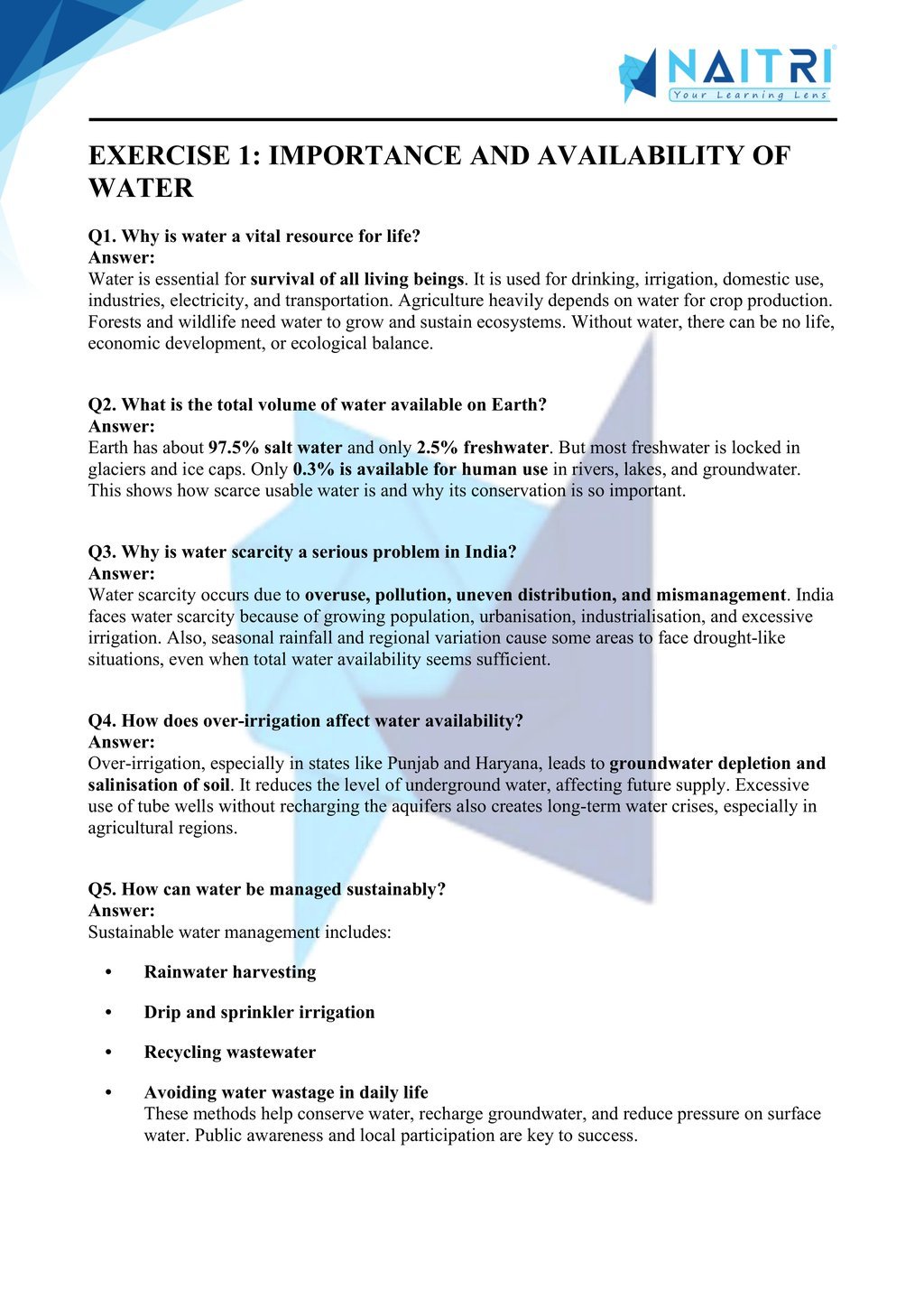
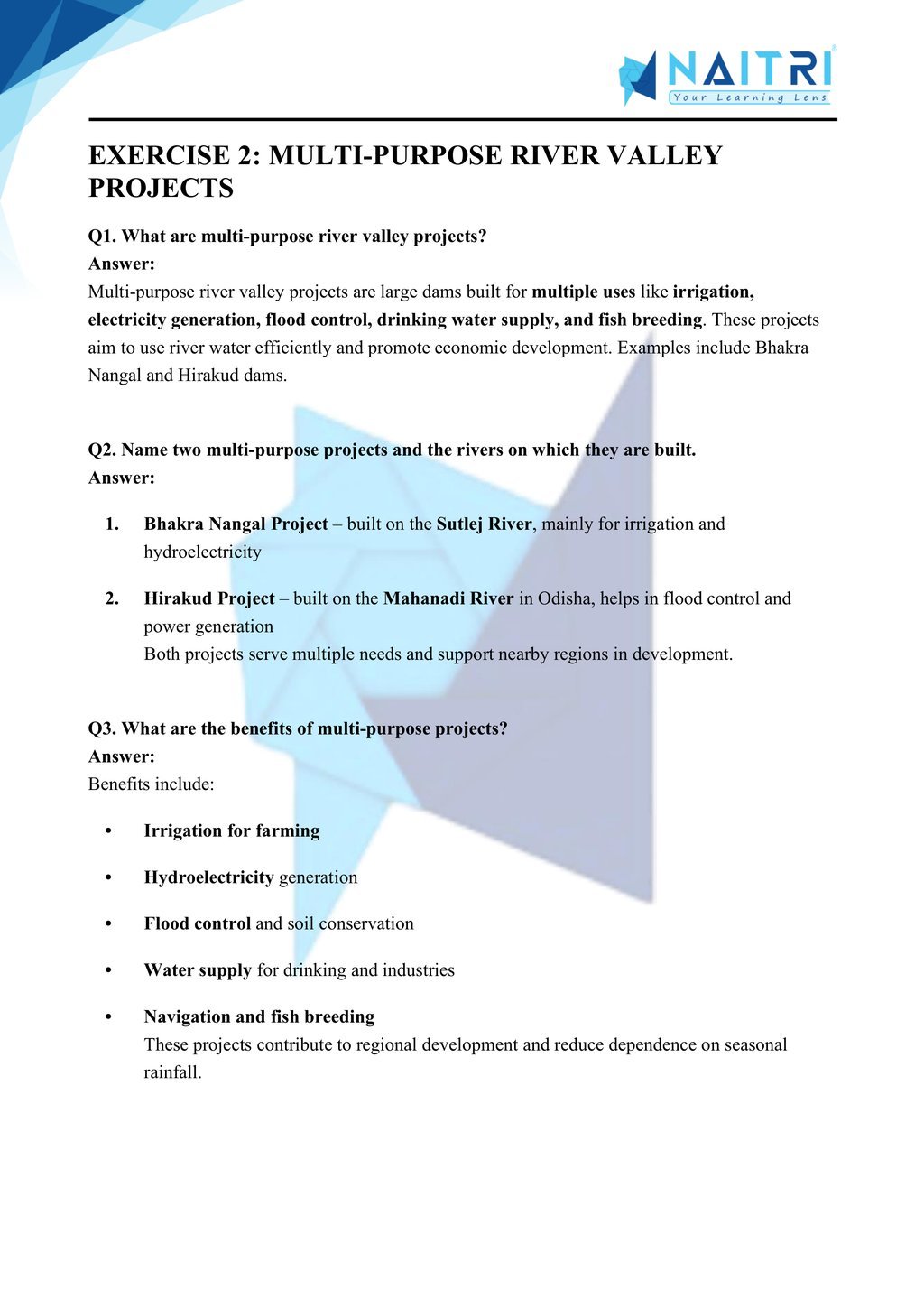
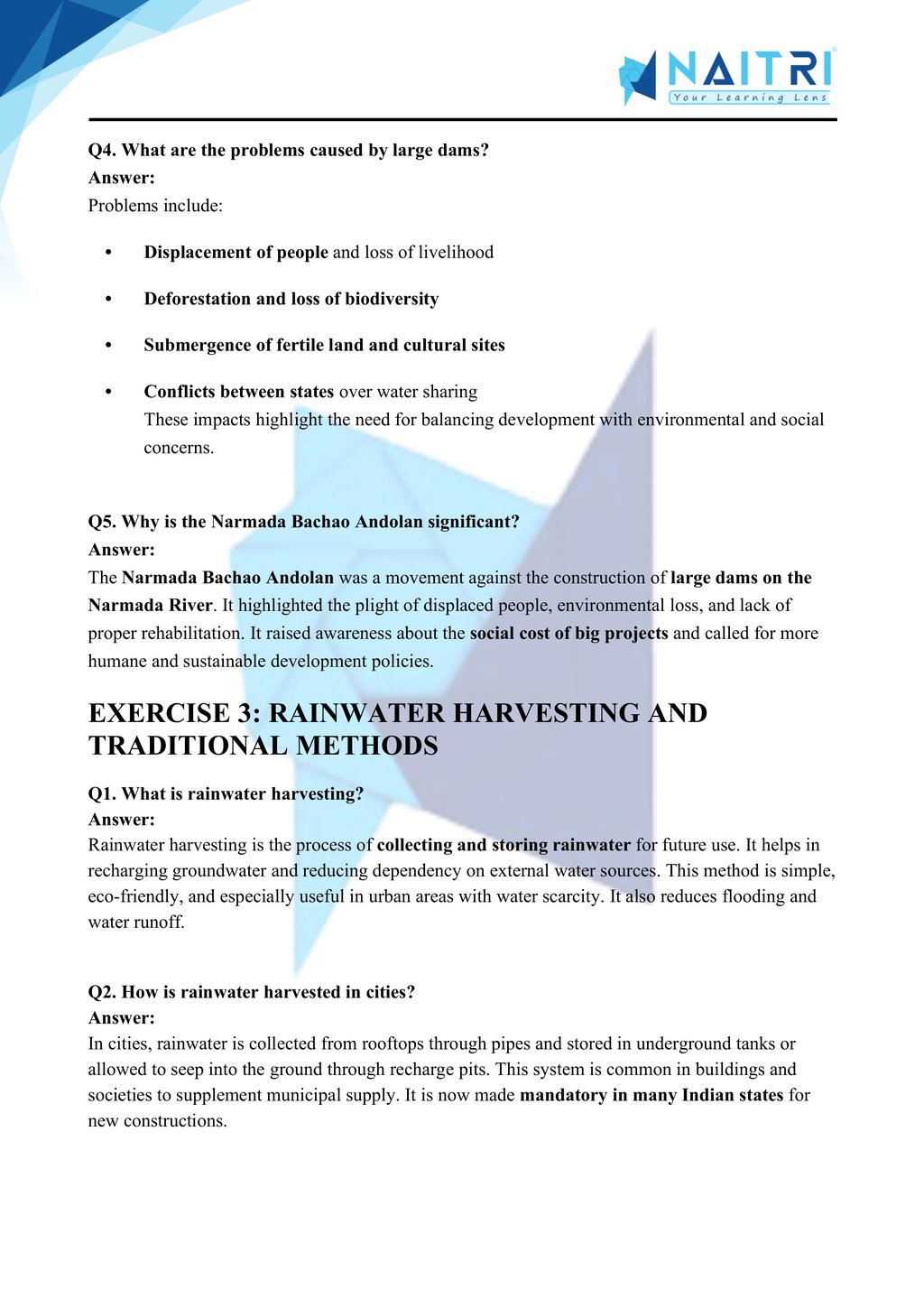
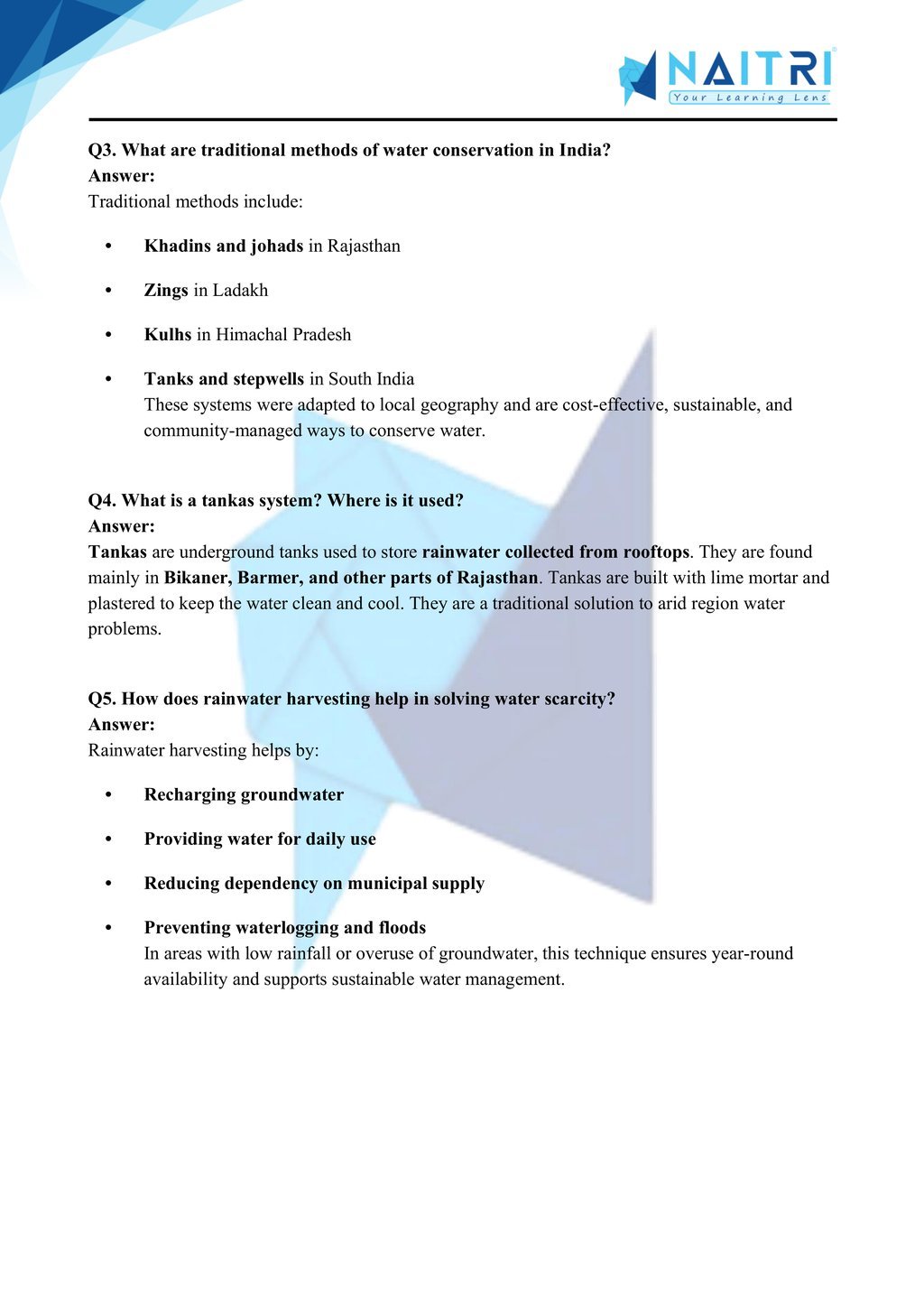
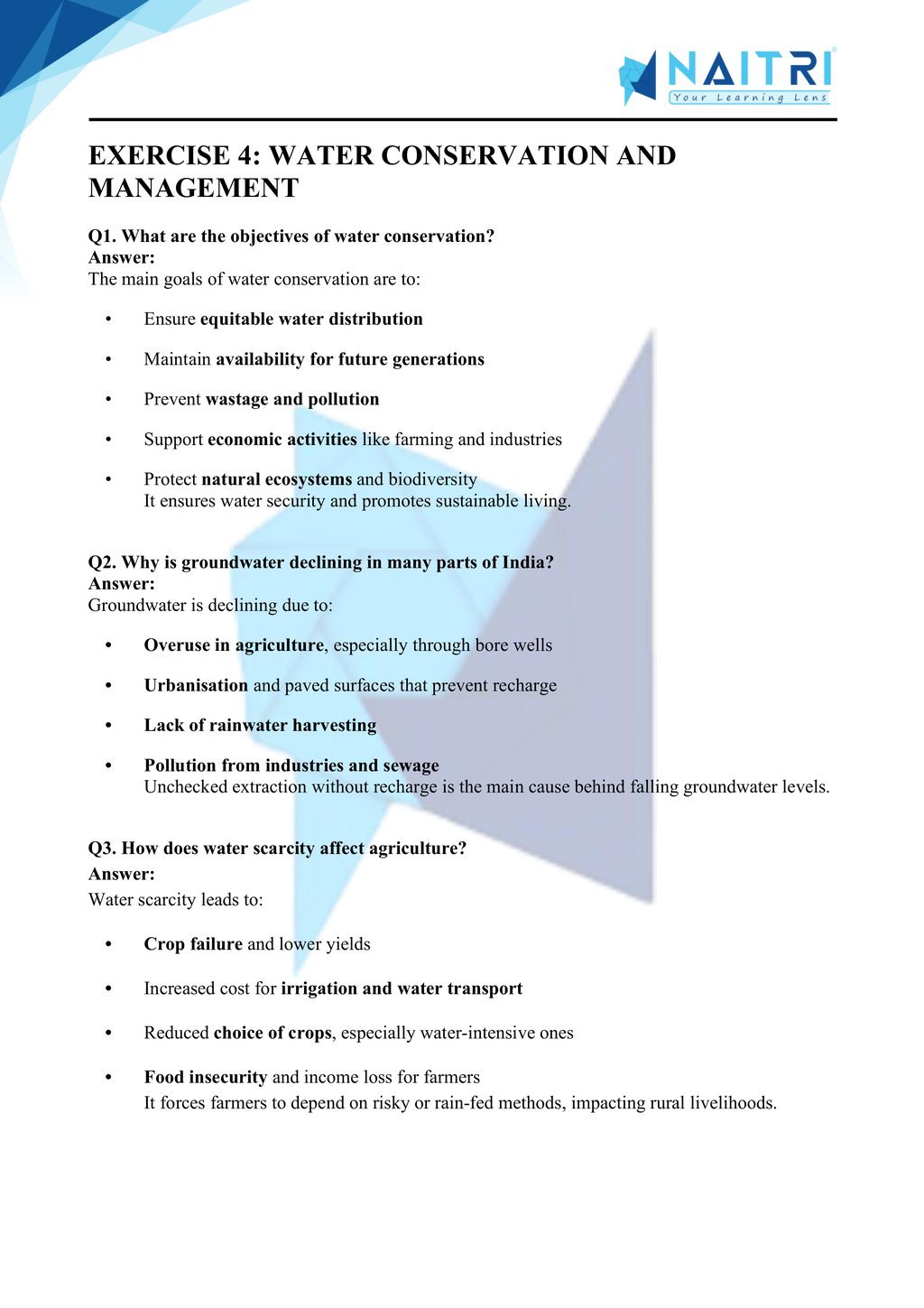
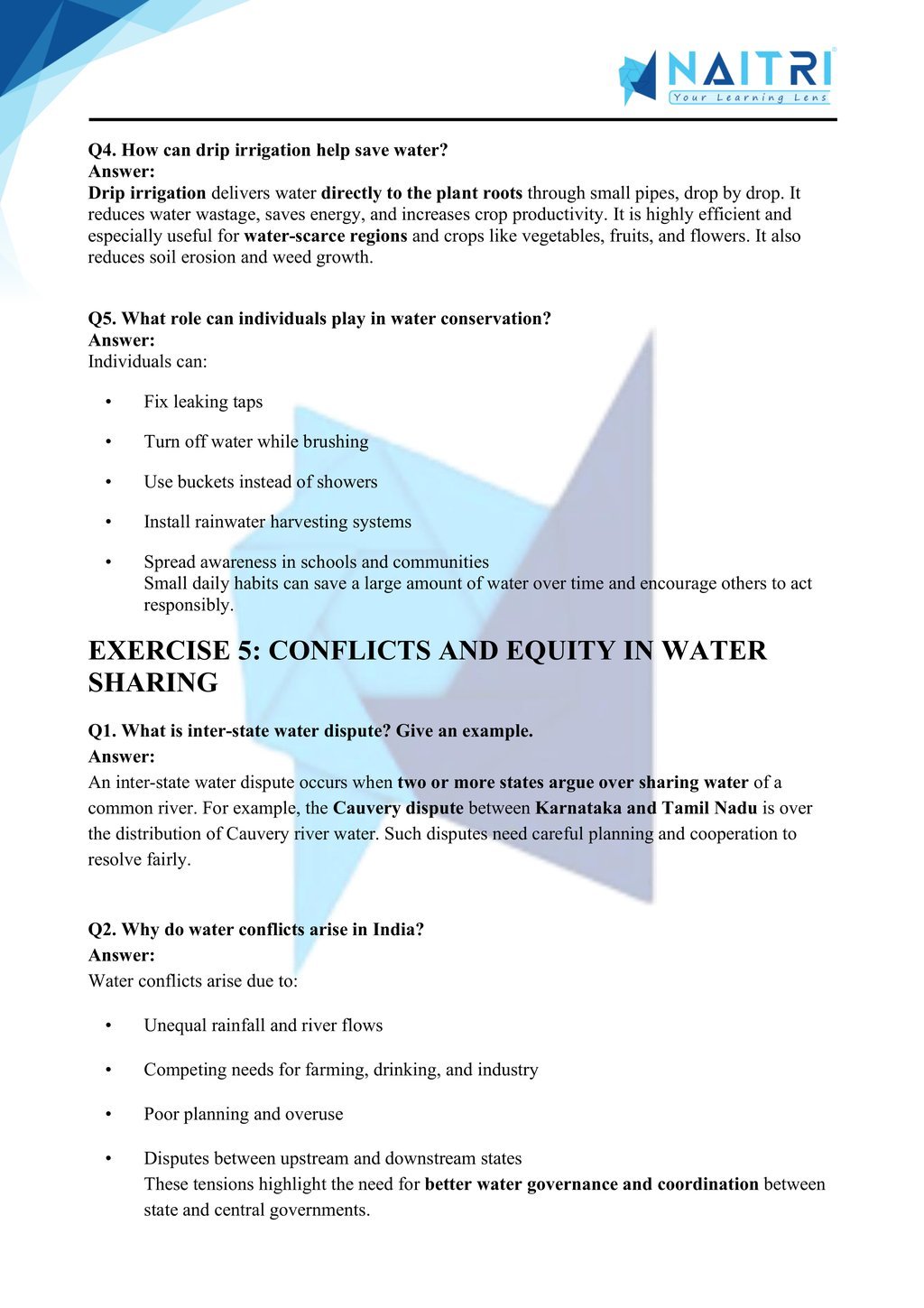
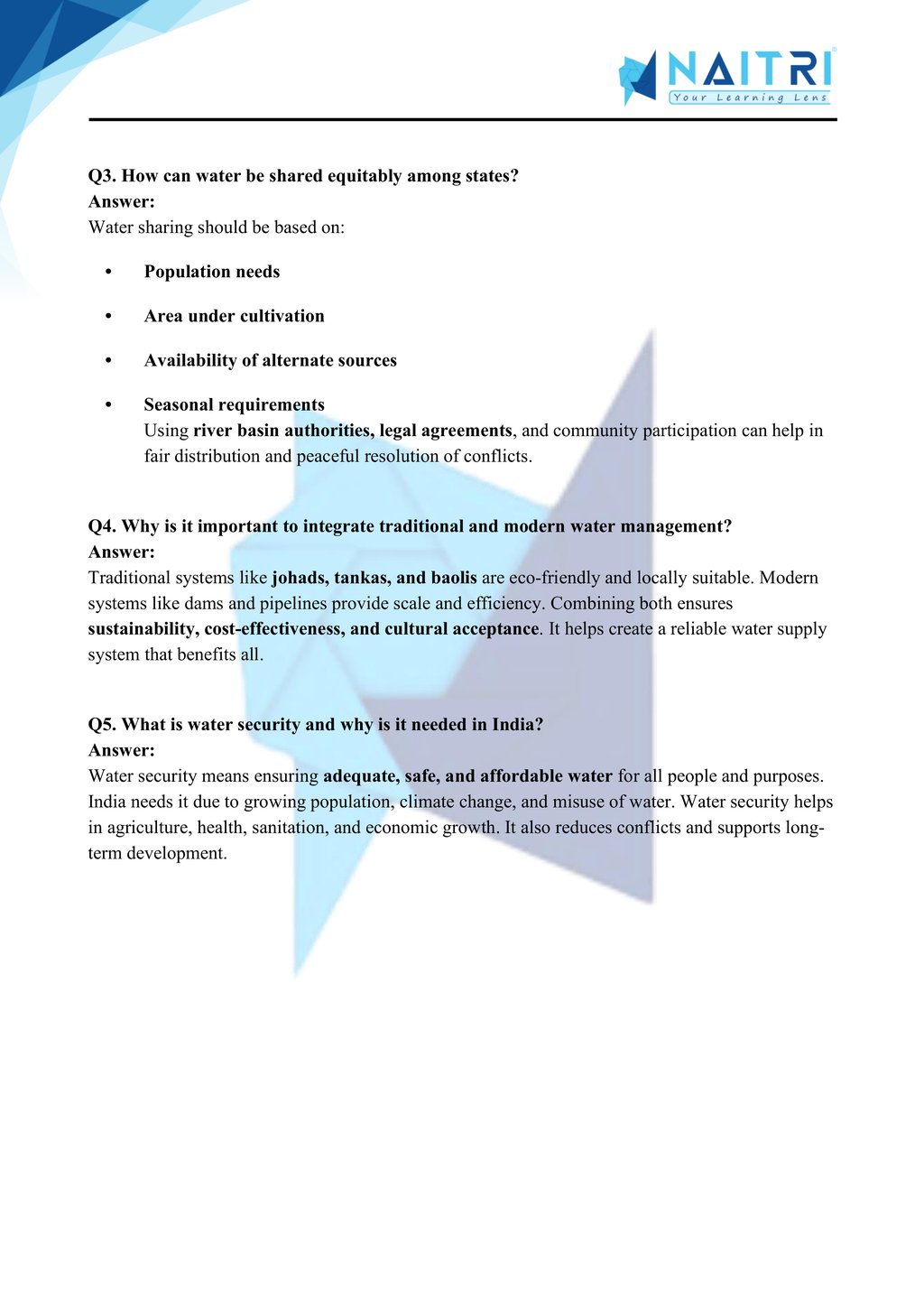
Experience Science Like Never Before – With AR!
Understanding Water Resources is now more exciting and immersive! With the NAITRI App, you can explore complex geography concepts through Augmented Reality (AR). See rivers flow, dams rise, and irrigation systems operate — right in front of you. Our AR-powered lessons make learning interactive, 3D, and fun, helping you retain concepts better and enjoy every topic.



Visualize . Interact . Understand . The future of learning is here
Water Resources – Important Questions with Answers
1. Why is water a renewable resource?
Answer: Water is renewable because it gets recycled through the water cycle, including processes like evaporation, condensation, and precipitation, and can be reused if properly managed.
2. What are the major sources of freshwater in India?
Answer: Major sources include rivers, lakes, ponds, groundwater, and glaciers. Rivers like the Ganga, Yamuna, and Brahmaputra are key freshwater suppliers.
3. What is the main cause of water scarcity in India?
Answer: Water scarcity arises from overuse, pollution, uneven distribution, population growth, and poor water management, especially in agriculture and industries.
4. How does over-irrigation affect water resources?
Answer: Over-irrigation leads to groundwater depletion, waterlogging, and soil salinity, reducing soil fertility and making the water table drop drastically.
5. Define multipurpose river valley projects.
Answer: These are projects that serve multiple purposes such as irrigation, electricity generation, flood control, water supply, and recreation, like the Bhakra Nangal Dam.
6. Name any two multipurpose river valley projects and rivers.
Answer:
Bhakra Nangal Project on the Sutlej River
Hirakud Project on the Mahanadi River
7. What are the advantages of multipurpose river valley projects?
Answer: They help in irrigation, hydroelectricity, flood control, navigation, and recreation, and boost agriculture and industry in the region.
8. What are the problems associated with multipurpose projects?
Answer: These projects lead to displacement of people, ecological imbalance, submergence of forests and villages, and may also cause inter-state disputes over water sharing.
9. What is rainwater harvesting?
Answer: Rainwater harvesting is the collection and storage of rainwater from rooftops or surfaces for later use, especially to recharge groundwater.
10. Why is rainwater harvesting important today?
Answer: It is vital to reduce water scarcity, replenish groundwater, minimize surface runoff, and ensure sustainable use of this critical resource.
11. How is rainwater harvesting practiced in Rajasthan?
Answer: In Rajasthan, people traditionally use tankas—covered underground tanks built in houses to store rainwater for dry months and drinking purposes.
12. What is the role of dams in water conservation?
Answer: Dams help in storing surplus water, managing floods, and providing water for irrigation, domestic use, and hydroelectricity during dry periods.
13. What is a tankas system?
Answer: A tanka is a traditional method of storing rainwater in cylindrical underground tanks, especially in arid regions like Bikaner and Barmer in Rajasthan.
14. Why is groundwater overuse a serious issue?
Answer: Excess use leads to depletion, dry wells, lowered water table, and future unavailability, especially in urban and agricultural regions.
15. What is water pollution?
Answer: Water pollution is the contamination of water bodies by harmful substances like chemicals, sewage, plastics, which makes water unsafe for consumption.
16. How can industries reduce water pollution?
Answer: Industries can adopt treatment plants, reuse water, minimize chemical discharge, and shift to eco-friendly processes to reduce water pollution.
17. Mention two traditional water harvesting systems in India.
Answer:
Khadins and Johads in Rajasthan
Zing system in Ladakh for diverting glacier water
18. What is the Narmada Bachao Andolan?
Answer: It was a people’s movement launched against the construction of the Sardar Sarovar Dam on the Narmada River, due to displacement and environmental concerns.
19. How does water scarcity affect agriculture?
Answer: It reduces crop yield, limits cultivation area, increases dependence on costly irrigation, and leads to food insecurity and rural poverty.
20. Why are inter-state water disputes common in India?
Answer: Disputes arise when multiple states depend on one river and differ in their water usage, storage, or allocation rights, causing conflicts.
21. What is watershed management?
Answer: Watershed management refers to conservation and management of water in a drainage basin to ensure efficient use, reduce erosion, and maintain water supply.
22. How is water important for economic development?
Answer: Water is essential for agriculture, industries, power generation, domestic use, and transport, and directly supports economic growth and livelihoods.
23. Why should water be managed collectively?
Answer: Collective management ensures equitable distribution, prevents overuse, involves community in conservation, and promotes sustainable practices.
24. What is a check dam and how does it help?
Answer: Check dams are small barriers built across streams to slow water flow, increase infiltration, and recharge groundwater levels.
25. Suggest two ways to conserve water at the individual level.
Answer:
Fixing leaks and using water-saving fixtures
Practicing rainwater harvesting and avoiding wastage in daily activities
Water Resources focuses on the importance of freshwater in human life and economic activities. Students learn about water scarcity, its causes, and the need for water conservation. The chapter explains methods like rainwater harvesting and multipurpose river valley projects. It encourages a scientific and civic approach to managing this critical resource in the face of population growth and climate change.
Download Naitri App
Easy, Visual Learning — Right on Your Phone
Learn with Augmented Reality! The Naitri app makes CBSE and MP Board concepts interactive and fun — even in low-resource settings. Watch lessons, complete homework, take tests, and track progress — all in one place. Anytime. Anywhere.
Available on








